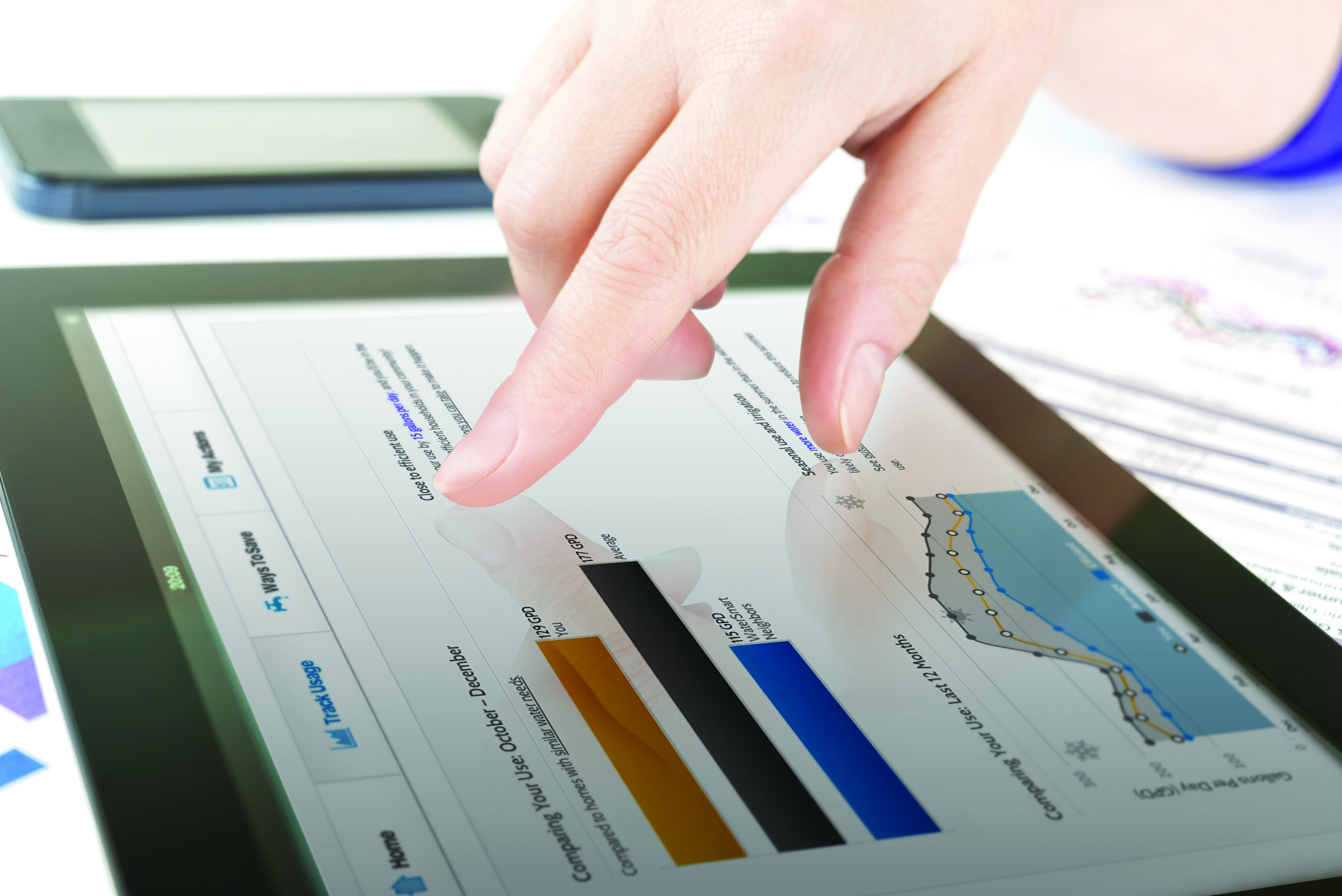This post is one in a series featuring the complete slate of advanced energy technologies outlined in the report This Is Advanced Energy.

Photo courtesy of WaterSmart Software.
Building on new technologies such as advanced metering infrastructure (AMI) and building energy management systems (BEMs), private companies have begun to harness newly available energy data to deliver software solutions that drive greater energy savings than are possible through hardware solutions alone. These data analytics applications include automated monitoring and valuation (M&V) of ef ciency savings, remote energy audits, automated and/or storage-enabled demand response (DR), energy intelligence software (EIS) that interfaces with BEMS solutions, and intelligent vehicle-to-grid (V2G) charging capabilities.
Working in concert with hardware devices such as AMI, BEMS, energy storage, distributed generation, and electric vehicles, these data analytics solutions make use of information such as electricity tariffs, customer energy use, and grid conditions to optimize cost, comfort, and/or grid performance outcomes.
While some of these data analytics applications are just emerging, many are in use today. Data analytics using cloud-based EIS enables ef cient building energy management across multiple properties by tracking and analyzing real-time energy data. Since deploying EnerNOC’s EIS at more than 40 properties in California, Colorado, Nevada, and Florida in 2012, commercial real estate rm Equity Of ce Properties has identi ed approximately $800,000 in low- and no-cost operational savings opportunities. Remote energy audits can also identify ef ciency or demand-side resource investments that pay off. Automated M&V software is an extension of this idea, combining traditional evaluation processes with a software-enabled measure-as-you-go approach that allows program administrators to understand and use performance data to inform decisions. By streamlining and simplifying the process of quantifying energy savings, EnergySavvy’s Optix Quantify software enables program administrators to detect and address issues nine months sooner than under traditional M&V. Another emerging data analytics solution is intelligent energy storage such as Stem’s PowerScope software, which reduces energy spending by controlling when a battery cycles on and off based on data such as predictable customer loads, weather conditions, and utility billing structures.
Software can integrate multiple advanced energy solutions, using data analytics to optimize performance and integration of energy ef ciency, demand-side resources, energy storage, and demand response. Data- enabled software solutions deliver both scalable cost savings and building performance improvements. Using EnergySavvy’s Optix Engage software, San Antonio municipal utility CPS Energy reduced retro t costs by over 80% compared to an in-home audit while also delivering higher energy savings. At the same time, by making savings more accessible and more convenient, the online audits tripled the number of completed retrofits.
For businesses, data aggregation and visibility from EIS solutions or intelligent energy storage allow nancial decision makers to make more informed choices about their operations. As data analytics solutions develop and proliferate, they will also help guide investment decisions for optimal grid performance.
